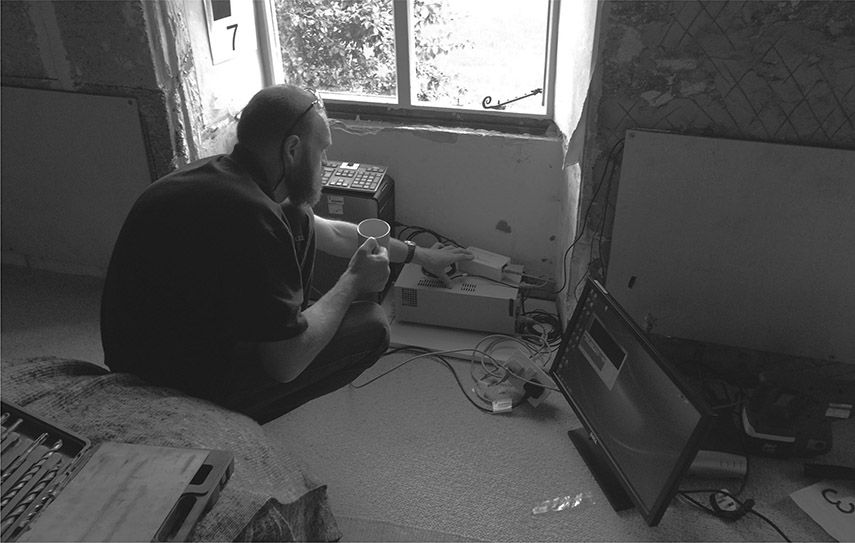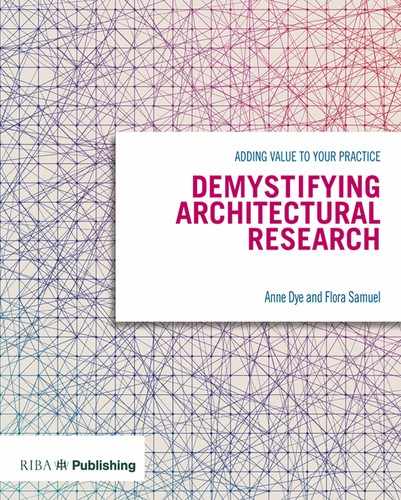Chapter 7
Permeable Insulation and Power
CONTRIBUTOR PROFILE: IAN STANDEN
Ian Standen is an architect with over 25 years’ experience in architectural practice and in higher education. At the Welsh School of architecture he was Associate Director of the Project Office, involving a leading role in the academic provision of practice within research and teaching by undertaking projects providing live test beds for research-derived ideas.
In January 2014, the City of Cardiff Council launched a competition funded by Innovate UK and the Welsh government’s Small Business Research Initiative (SBRI) invited proposals for innovative energy-saving ideas compatible with traditionally constructed heritage buildings, generally pre-1919.
Permeable insulation and power (PIP) is a new technology that applies cutting-edge low-power coated electrical heating to permeable prefabricated lime-based internal wall insulation in existing buildings. The primary aim is to enhance the insulation and energy performance of the building, affecting its external appearance, thereby reducing building running costs. Research has shown that traditionally constructed walls allow moisture to flow through the wall which means that compatible permeable insulations materials are needed. The lime-based insulation used in this approach is known for its permeable qualities. This ancient material is combined with the latest development in low-powered conductive coatings, effectively turning the wall surface into a large radiator ensuring that the building occupants are comfortable. The PIP feasibility study was carried out in collaboration with other innovative companies including Vivus Lime Ltd, Okatech Ltd, the BioComposites Centre at Bangor University and Wood Knowledge Wales.
Practice profile: Stride Treglown
Founded in 1953, Stride Treglown is a practice of around 270 with nine offices in the UK and in the UAE. They work in architecture, interior design, BIM, master planning and urban design, landscape architecture, town planning, building surveying, historical building conservation, project management, BREEAM/environmental assessment, sustainable design, CDM/health and safety, and graphic design.
The practice engages with research in order to respond to changing building technologies, and the burgeoning number of products and systems available – buildings are becoming increasingly complex entities, with occupant health and well-being key to architectural success. Evaluation of product suitability requires in-depth understanding of, for example, material composition and microclimatic conditions within constructions and spaces, so Stride Treglown’s business plan has allocated funds for research activities. Research knowledge is disseminated within the practice and made available to inform future projects.

Dr Bruce Philip setting up the monitoring equipment for the low conductive heated panels used in the PIP project
Context
An experimental room was used within an existing privately owned eighteenth-century stone-built cottage in Monmouthshire. The building showed typical conditions of cold, damp walls, resulting in uncomfortable internal conditions for occupants. The project drew inspiration from various existing research, including doctoral research work by Gary Perkins at Cardiff Metropolitan University into admixtures and mix proportions, Bruce Philip’s work at Swansea University on autonomous buildings, and John Counsell’s building performance evaluation with Cadw (the Welsh government’s historic environment service) at Heritage Cottage, Cwmdare.
Approach
Philosophy
Our aim was to improve energy performance within a traditional building while leaving its essential character intact. We attempted to achieve this using everyday skills, low to intermediate technology and a skill base for construction industry small and medium enterprises (SMEs) with readily available auditable recording sensors and data logging.
Methods
The project programme was divided into the following stages:
- Design stage: Firstly the formulation of numerous mixes of hemp lime was explored – this had appeared, through previous research to offer the possibility of forming prefabricated hemp panels. A six-week iterative design stage followed, including sourcing suitable materials in conjunction with developing mould designs. A prototype panel 45mm thick resulted in thermal conductivity of 0.09874 watts per square metre per degree Celcius (W∙m-1·K-1) when tested at Bangor University. A desktop calculation, assuming an existing solid stone wall of 400mm with lime plaster interior finish, indicated a U-value in the region of 1.55 watts per square metre per degree Celcius. By adding the hemp/lime units we predicted that the rate of heat loss from the space would improve by 50 per cent, with a U-value of 0.8237 watts per square metre per degree Celcius.
- Installation: The installation stage began with a laser scanned survey of the experimental room, the removal of existing finishes, making good the walls, installation of the hemp/lime panels and two conductive coated panels (one surface mounted room side, and the other embedded between the hemp panel and the existing stonework) and connection of room monitoring equipment fixed internally and externally.
- Monitoring: The test chamber was monitored with remote access from August 2014 until March 2015, and computer data was downloaded via a webpage link and a low-cost Raspberry Pi computer located within the room.
Insights and Impact
The project has successfully combined a low-powered heating system with permeable lime/hemp insulation to provide a potential solution to the damp, cold conditions often experienced in older, solid construction buildings. Two design approaches compared a surface-mounted radiant-heated panel with one embedded in the wall providing thermal mass.
A full analysis of the data was undertaken at the end of March 2015, with results published both within each organisation and in external technical publications.
Lessons
The key feature of the project is breathability. The hygroscopic hemp/lime insulation units provide a material lining capable of managing moisture in the building where some modern materials (such as gypsum plaster) cannot.
Introduction of material of this nature could lead to indoor air-quality improvements for the occupants, energy saving, and life-cycle benefits for the building owner as the materials are recyclable and environmentally benign. The use of responsive sensor-linked heated panels provides the user with better control over changing room conditions through the seasons.
Our advice to others considering undertaking research of this nature is:
- Do not underestimate the time required to develop innovative ideas.
- Keep to your budgets by firm project management.
- When working in collaboration or consortium, make sure roles and responsibilities are fully agreed and understood with appropriate IP rights in place.
The benefits to practice and individuals involved are immeasurable, as first-hand knowledge of making and doing dispels the myth that surrounds the use of traditional materials in construction such as lime.
